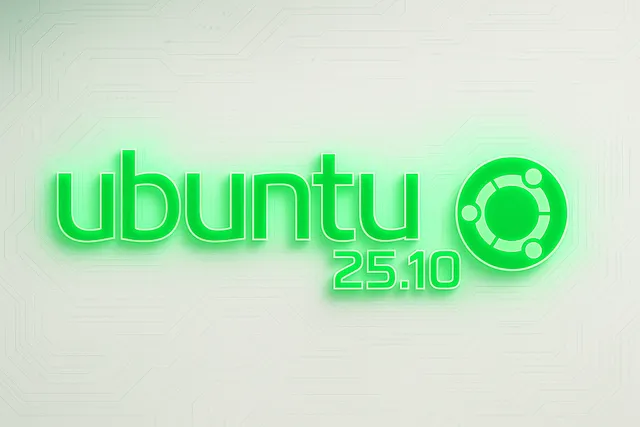- Penktadienis, Spalio 10, 2025

Canonical has announced the release of Ubuntu 25.10, codenamed “Questing Quokka,” now available for download. As the last interim Ubuntu version before next year’s LTS (Long Term Support) release, 25.10 focuses on polish and modernization across the board. It delivers upgrades in hardware compatibility, desktop experience, and security, all aimed at setting the stage for Ubuntu 26.04 LTS in 2026. Below, we highlight the most important new features and improvements in Questing Quokka compared to Ubuntu 25.04.
Modern Desktop Experience
Ubuntu 25.10 comes with GNOME 49, the latest GNOME desktop environment, which introduces a more convenient and accessible user experience. Notable additions include media playback controls right on the lock screen and improved display brightness settings, alongside various accessibility enhancements. In a push to modernize Ubuntu’s app selection, this release also debuts two new default applications: the Loupe image viewer and Ptyxis terminal emulator. Loupe replaces the older Eye of GNOME as a faster, modern image viewer, while Ptyxis (built with GTK4/libadwaita) takes over from the traditional GNOME Terminal. These new apps provide a sleeker interface and performance improvements, reflecting Ubuntu’s drive to adopt modern, efficient technologies. Additionally, Ubuntu 25.10 completes its transition to the Wayland display system – GNOME now runs on Wayland by default, and the legacy X11 session has been removed for a smoother, more secure desktop (with X11-based apps still supported via XWayland compatibility).
Performance and Hardware Upgrades
Under the hood, Questing Quokka is powered by the Linux kernel 6.17, bringing numerous performance optimizations and broader hardware support. Users will benefit from improved out-of-the-box compatibility with the latest processors, graphics cards, and other devices, along with enhancements to filesystems and overall system responsiveness. The system’s startup process is also improved in 25.10: Ubuntu has adopted Dracut as the default initramfs generator, replacing the older initramfs-tools. This modernizes the boot process and should result in faster, more reliable boot times for many users. Together, these low-level upgrades make Ubuntu 25.10 feel snappier and ensure it can take full advantage of new hardware technologies.
Security Enhancements
Security is a central theme of Ubuntu 25.10’s improvements. This release is the first to feature memory-safe implementations of key system utilities. Notably, the venerable sudo tool (used for privileged commands) has been replaced by “sudo-rs,” a new Rust-based reimplementation designed for improved safety. The traditional sudo is still available if needed, but by default, Ubuntu now leverages this Rust version to reduce the risk of security vulnerabilities. In the same vein, Ubuntu 25.10 is also the first major distro to include a Rust-based replacement for the core GNU utilities (the basic command-line tools), achieving like-for-like functionality with far fewer memory-related risks. For everyday users, these changes are behind the scenes, but they bolster Ubuntu’s overall security and stability.
Ubuntu 25.10 also introduces enhanced full-disk encryption options. The installer now offers experimental support for TPM-backed full disk encryption, which integrates with the Trusted Platform Module security chip present in modern PCs. This means that, on capable hardware, users can opt to have their disk encryption tied to the device’s TPM for stronger protection – a feature that Canonical is refining in preparation for making it mainstream in the next LTS release. (New capabilities like dual-mode unlock with TPM and passphrase and automatic recovery-key handling have been added to this encryption method in 25.10.)
Other security-related improvements include enabling Network Time Security (NTS) by default, ensuring secure, authenticated time synchronization out of the box, and continuing to harden the system’s software supply chain. Meanwhile, Ubuntu’s developers have also kept up a focus on accessibility: 25.10 brings refinements that improve high-contrast themes, keyboard navigation, and screen reader support, aligning Ubuntu with upcoming European accessibility standards and making the desktop more straightforward to use for all.
Preparing for Ubuntu 26.04 LTS
As the final interim release before Ubuntu’s next long-term support version, Questing Quokka clearly signals Ubuntu’s direction for 2026. Canonical describes Ubuntu 25.10 as a “statement of intent” for 26.04 LTS, noting that many of the changes introduced here will be consolidated and refined for the LTS. For example, the complete move to Wayland and the introduction of Rust-based core components demonstrate an emphasis on a modern, secure foundation going forward. The work done now on features like TPM-based encryption and memory-safe utilities is paving the way for these to be fully supported and stable by the time of the LTS. Ubuntu 25.10’s kernel even includes early support for Intel’s TDX (Trust Domain Extensions) to enable confidential computing, and it adopts the latest RISC-V RVA23 platform profile for Ubuntu’s RISC-V architecture builds – forward-looking steps to ensure Ubuntu 26.04 LTS will launch with cutting-edge security and hardware capabilities.
Ubuntu 25.10 “Questing Quokka” is available today as a free upgrade or download. Since this is an interim release (not an LTS), it will receive official support and updates for 9 months. After this period, users can upgrade to Ubuntu 26.04 LTS for long-term support. With its blend of user-facing polish and significant under-the-hood improvements, Ubuntu 25.10 provides a confident glimpse into Ubuntu’s future as it heads towards the next LTS chapter.
